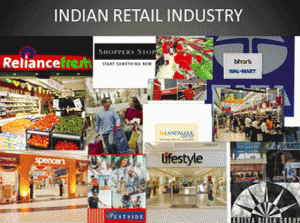There has been a significant movement of new retail brands into the markets in the region. Retail companies seem to have taken on board the Global Tilt described by thinker, speaker and advisor Ram Charan in his recent book of the same name.
As the centre of gravity of world business shifts south across the 31st parallel, the rules are changing, and any CEO who is serious about the condition of the business 10-20 years hence needs to mull over which markets are to be accessed and how the franchise business is to be positioned. One could suggest even at the cost of building future competition.
Despite the recent problems that some emerging economies are facing in light of the reduction of cheap money flows, and the ignominy of the Brics economies (Brazil, Russia, India, China and South Africa) being ‘psychologically downgraded’ to The Fragile Five, it would take a very courageous soothsayer to say that in the medium to long term, the economies of the south are not going to dominate global commerce.
In this future a major player will be the Gulf, which even today continues to defy global trends with close to 5 per cent growth rates.
As a result, retailers continue to find this part of the world exciting and many brands that have been resisting entry have found ways to come in. The latest is Hollister, which is probably a precursor to big brother Abercrombie and Fitch also moving in.
While many brands have made the move into this geography pretty quickly and smoothly, there are still many that have not made the transition. European brands have perhaps been more forthcoming, partly because they have been used to trans-border businesses. They have been dealing with people with different languages, cultures, currencies, tax structures, etc and therefore have internal systems to handle such complexities.
A lot of US companies have been so consumed with developing their home markets that they are genuinely ill-equipped to handle businesses outside North America. Their logistics, ordering, legal and marketing structures are all geared to operating first in the 50 states, and then in neighbouring countries.
Often when approached from the other side of the globe, they are unable to make the shift without going through an extensive exercise of setting up systems and processes to handle this long-distance business.
The other speed-bump is their lack of experience of handling franchise or dealer & distributor businesses. They are so used to doing it themselves that they baulk at the idea of ‘handing over’ their brand to someone else who would then be the sole custodian of the brand and its fate in that part of the world. To wit, when speaking to a major brand in the US about coming to Dubai their response was: “Nope, we know our brand best and we know we can do it better than anyone else.”
Potential partners may have to find new ways of working through relationships that are not necessarily franchise or agency agreements. This is anathema to many regional business houses not used to having to compete for their control.
But early moves in this direction were made a few years ago by electronics and IT companies who are always hard pressed to find the formula, first to achieve volumes and then to make profits. It started with multi-dealer/multi-agent set-ups by brands such as HP and Dell. This has now been taken to another level with multiple Samsung stores being operated by different companies.
As the market develops, new structures are taking shape while others need to be found. Local business houses may have to consider accepting a role as a support facilitator, not actually operating the retail, but providing ancillary services like getting staff, space, warehousing, logistics and housing, and being compensated for these services.
Multi-operator retails could grow with different franchisees handling stores of the same brand. This system is quite prevalent in Europe with many different operators sometimes even on the same street… and may the best operator win.
Of course, there is also the possibility that the authorities could find ways to make it possible for retail brands to come into the market on their own. This could encourage a number of brands now standing on the sidelines to move in and start independent operations.
Whatever the ways out, a high level of adjustment and new thinking from all the stakeholders will be required.
Related Post:
1. Expanding through franchising
2. How to Work on Your Franchisee Business-4 Accounting Ratios
3. How to find the right franchise?































 +91 9909960054
+91 9909960054
Pingback: Kishore
Pingback: Himanai Sharma(delhi)
Pingback: lalit